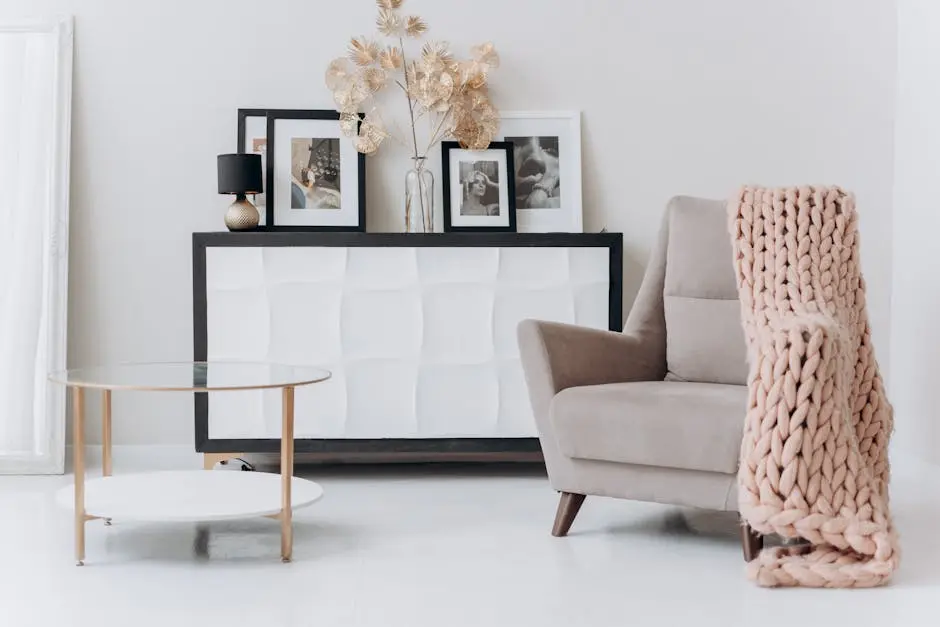What Should I Expect from a Bespoke Interior Design Service?
Choosing a bespoke interior design service can be a transformative experience for your home or business. But what can you really expect from such a service? In this guide, we’ll walk you through everything you need to know, from initial consultations to the final reveal.
Initial Consultation
The first step in a bespoke interior design service is an initial consultation. This is where you’ll discuss your vision, budget, and preferences with the designer. It’s a chance to get to know each other and ensure that the partnership is a good fit.
During this session, you will explore your likes and dislikes, your lifestyle requirements, and any particular features you want to include in your home. It’s essential to be honest about your expectations and open to suggestions. The designer will also give you an overview of how the process will unfold, what timelines to expect, and how the communication will be maintained throughout the project.
This conversation is also crucial for the designer to understand your aesthetic preferences. Are you leaning toward a minimalist style, a mid-century modern look, or perhaps something more eclectic? Sharing photos or magazine ads that you’ve curated will be a pivotal part of sharing your goals, since a picture speaks a thousand words! By the end of this consultation, both you and the designer should have a clear and mutual understanding of the project scope and objectives.
Design Concept Development
After the initial consultation, the designer will create a design concept tailored to your tastes and requirements. This phase involves mood boards, sketches, and possibly digital renderings to help you visualize the design.
This stage is all about creativity and innovation. The designer will synthesize all the information gathered during the consultation and start formulating a cohesive design plan. They might use mood boards to organize colors, textures, and styles that will form the foundation of your space. These visual aids are incredibly helpful in ensuring that you and the designer are on the same page.
In many cases, designers will create digital renderings, which are essentially realistic pictures of what your space will look like once the design is complete. This step can be very exciting as it allows you to see your vision brought to life in a digital format. It’s an excellent opportunity to make any adjustments before moving on to the next phase.
Material and Fixture Selection
Next, you’ll work with the designer to select materials, fixtures, and finishes. This includes everything from paint colors and flooring to lighting and furniture. The designer will guide you through choices that align with the envisioned design and your budget.
During this phase, you might visit showrooms and fabricators to choose the actual items that will be installed in your home. It’s an interactive part of the process where your tactile and visual preferences play a significant role. Choosing the right materials and fixtures ensures that every element in your space is cohesive and reflective of your personal style.
This stage also includes addressing any specific functional requirements. If you have young children, for example, durable fabrics and surfaces might be a priority. Similarly, if you enjoy entertaining, you might focus on selecting appropriate lighting and dining furniture. By the end of this step, all major decisions regarding materials and fixtures should be finalized.
Detailed Planning and Budgeting
With the design concept and materials selected, the designer will create detailed plans and refine the budget. This step ensures that every detail is accounted for and that the project stays on track financially.
In this phase, the designer will compile a comprehensive plan that includes detailed drawings and specifications. These documents serve as the blueprint for the project and are used by contractors and craftspeople to ensure everything is executed precisely as planned. The budget will also be itemized, providing a clear breakdown of costs associated with each part of the project.
Just as Tamara Romeo from Southcoast Design Group explains, budgeting is akin to planning a luxurious vacation, where every choice impacts the overall cost. Finalizing the budget at this stage helps prevent surprises later, ensuring that every decision aligns with your financial expectations.
Project Management and Execution
The actual implementation of the design involves project management by the designer. They will coordinate with contractors, oversee the work, and ensure that everything is completed to a high standard and according to the agreed timeline.
This is where the plan starts to materialize. The designer will manage all the logistics, from coordinating with contractors to scheduling deliveries. They will make regular site visits to ensure that the work is being carried out correctly and to address any issues that might arise promptly. This hands-on management ensures that your project progresses smoothly and stays on schedule.
Communication during this phase is crucial. Expect regular updates from your designer, along with progress reports and possibly site meetings. This continuous oversight helps maintain the design’s integrity and ensures that any last-minute changes or adjustments can be swiftly implemented without compromising the overall vision.
Final Reveal and Adjustments
Finally, the designer will present the finished space to you. This is your opportunity to see the result and discuss any final adjustments or touch-ups that may be needed to perfect the design.
The final reveal is undoubtedly the most exciting part of the bespoke interior design process. It’s a moment of transformation, where you see the culmination of months of planning, designing, and execution. Your designer will take you on a guided tour of your new space, highlighting the design features and explaining how each element contributes to the overall aesthetic and functionality.
Even at this stage, there might be a few tweaks needed. Designers often refer to this as the ‘snagging list,’ which includes any minor issues that need attention, such as a touch-up of paint or a small adjustment to a fixture. Addressing these final details ensures that the space is entirely up to your standards before the project is officially completed.
Final Thoughts
A bespoke interior design service is an opportunity to create a space that reflects your personal style and meets your unique needs. By understanding what to expect at each stage, you can fully enjoy the process and the stunning results. For more detailed guidance, we encourage you to explore our expert services at Southcoast Design Group.








